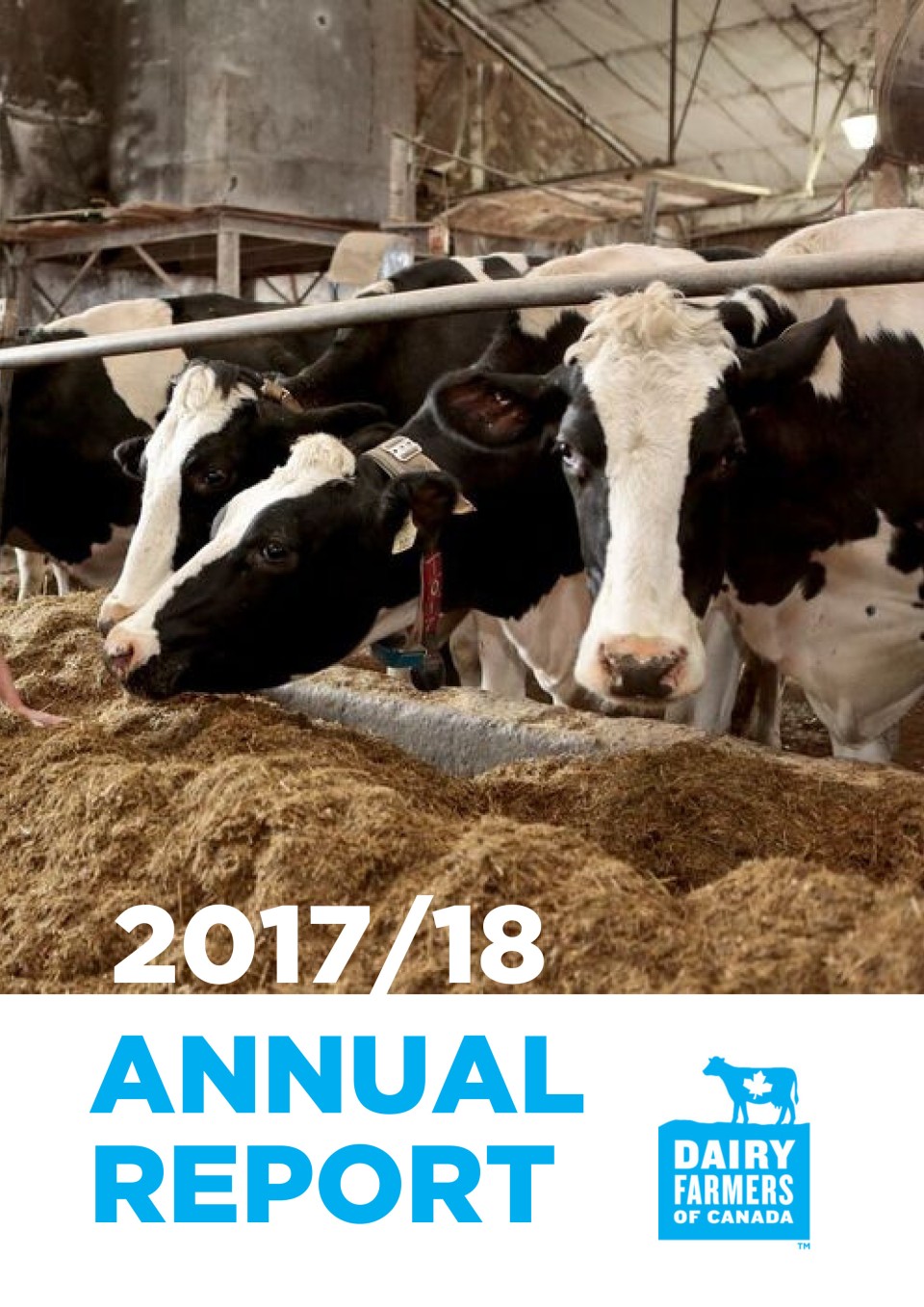Annual report 2017-2018
This Annual Report provides an overview of some of the activities and achievement of the organization over the past year, from July 2017 to July 2018.

Corporate highlights and focus
The dairy market in Canada has been growing for the past few years, and quota grew to meet this demand for dairy in Canada. As a result, investments at both farm and processing levels have been notable. However, 2018 is showing signs of demand softening. The long-term widening of trade balance between Canada and the US has narrowed in 2017, and currently sits at about the same level as in 2014, prior to the need to import butterfat in the face of rapidly increasing butterfat demand. In the last ten years, Canada’s dairy trade deficit (defined as trade of products under Chapter 4) has fluctuated from year to year and has grown steadily in the last ten years, reaching a high in 2016. In 2017, Canada imported a massive $470.6 million in US dairy products. When one adds imports of other dairy products that are not subject to a tariff-rate quota, Canada is even more generous in importing products from the US and elsewhere.
On the trade front, uncertainty and unpredictability have been the words that best describe the ongoing NAFTA renegotiations. To verify the Canadian pulse, Dairy Farmers of Canada commissioned Ipsos to do a survey of consumer attitudes towards the dairy sector, supply management and NAFTA. The results showed 75% of Canadians believe that the Canadian dairy sector should be defended, and that the federal government should make more efforts to do so in the NAFTA renegotiations. Additionally, eight Canadians out of 10 share Canadian dairy farmers’ concerns with regard to the NAFTA renegotiation and the potential concessions that could result from this renegotiation.
Recent market trends are tempered by the impact of trade deals that have been signed and are giving away access to the Canadian dairy market. Food technology marches on and Dairy Farmers of Canada, like the rest of the dairy industry in the world, is closely monitoring the potential market disruption of “dairy proteins” and other meats fabricated in a lab, without the need for animals.
Dairy Farmers of Canada is also keenly aware of the long-term trends of declining consumption of fluid milk, especially in the younger generation. Millennials are changing the market overall and the dairy sector does not escape this trend. The younger generation is more determined to put their money where their mouth is, making food choices based on their sensitivity to the environmental footprint of food, local economy, nutrition value and care of animals.
Food choices carry opportunities and risk for the dairy sector. Certainly, with the proAction Initiative, we have put in place the stepping stones to prove how farmers do the right thing for animals and for the environment. The dairy sector is first or second most important agriculture sector in seven of ten provinces in Canada, contributing to the local economy throughout the country. It is up to DFC to tell the story of the superior nutrition value of dairy products. This, remains a priority of the organization.
